New Snow: 13 inches
Settled Snow Depth: 47 inches
High Temperature: 48°F (February 23)
Low Temperature: -3°F (February 22)
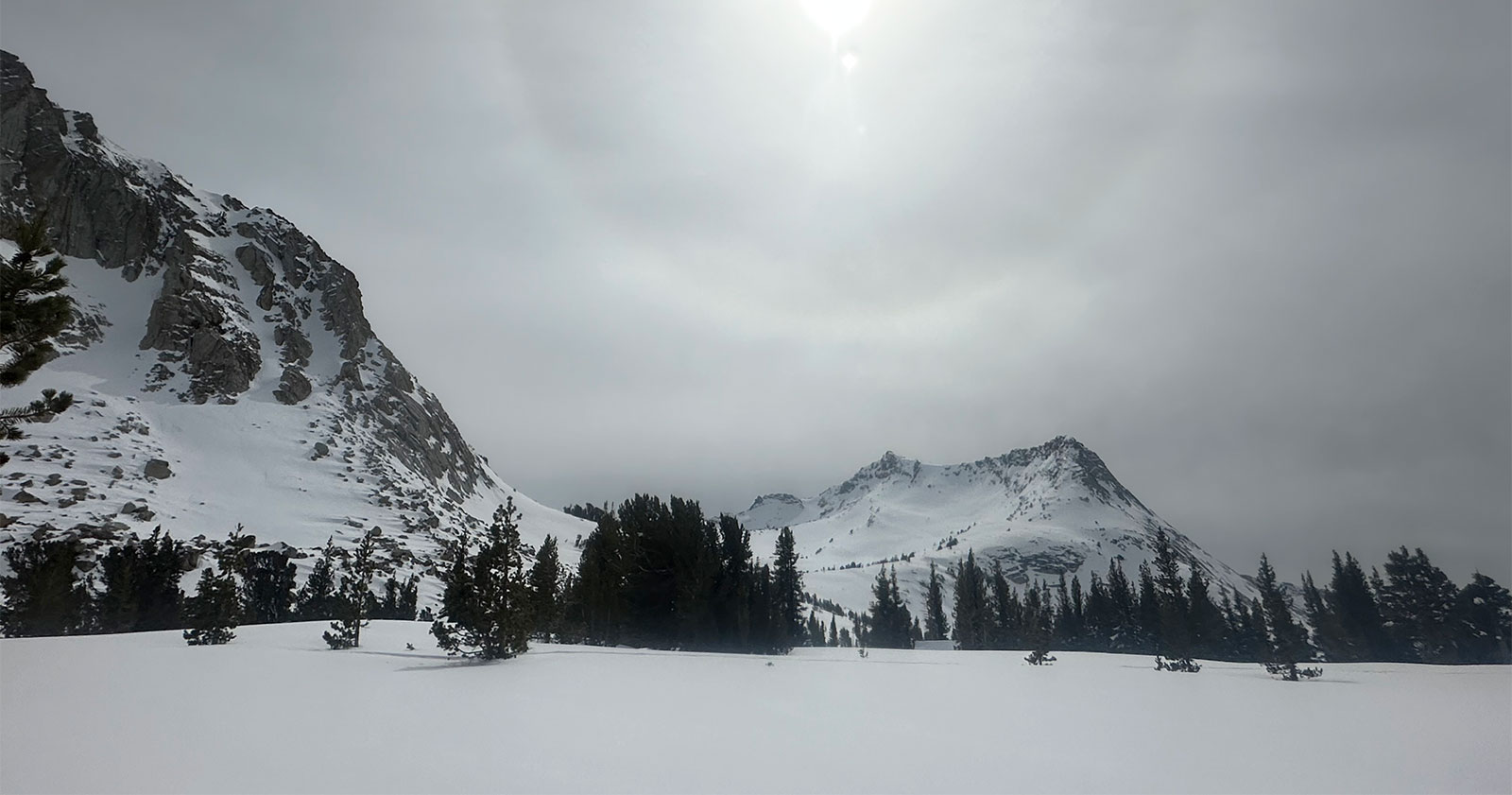
Ski Conditions and Weather
This seven day stretch of weather started with 13 inches of low-density new snow, and was followed by calm winds, clear skies, and warmer than average temperatures. By and large this is a fine recipe for good ski conditions. However, by weeks end, the warm and sunny days had formed a melt freeze crust on all but north aspects above 8,000 feet. The good ski turning is now limited to true north aspects that still hold dry powder snow. Coverage is good, and ski touring opportunities abound. Snowline presently stretches down to the gate in Lee Vining Canyon to the east, and visitors approaching Tuolumne Meadows from this side should anticipate traveling over snow for the fourteen-mile journey.
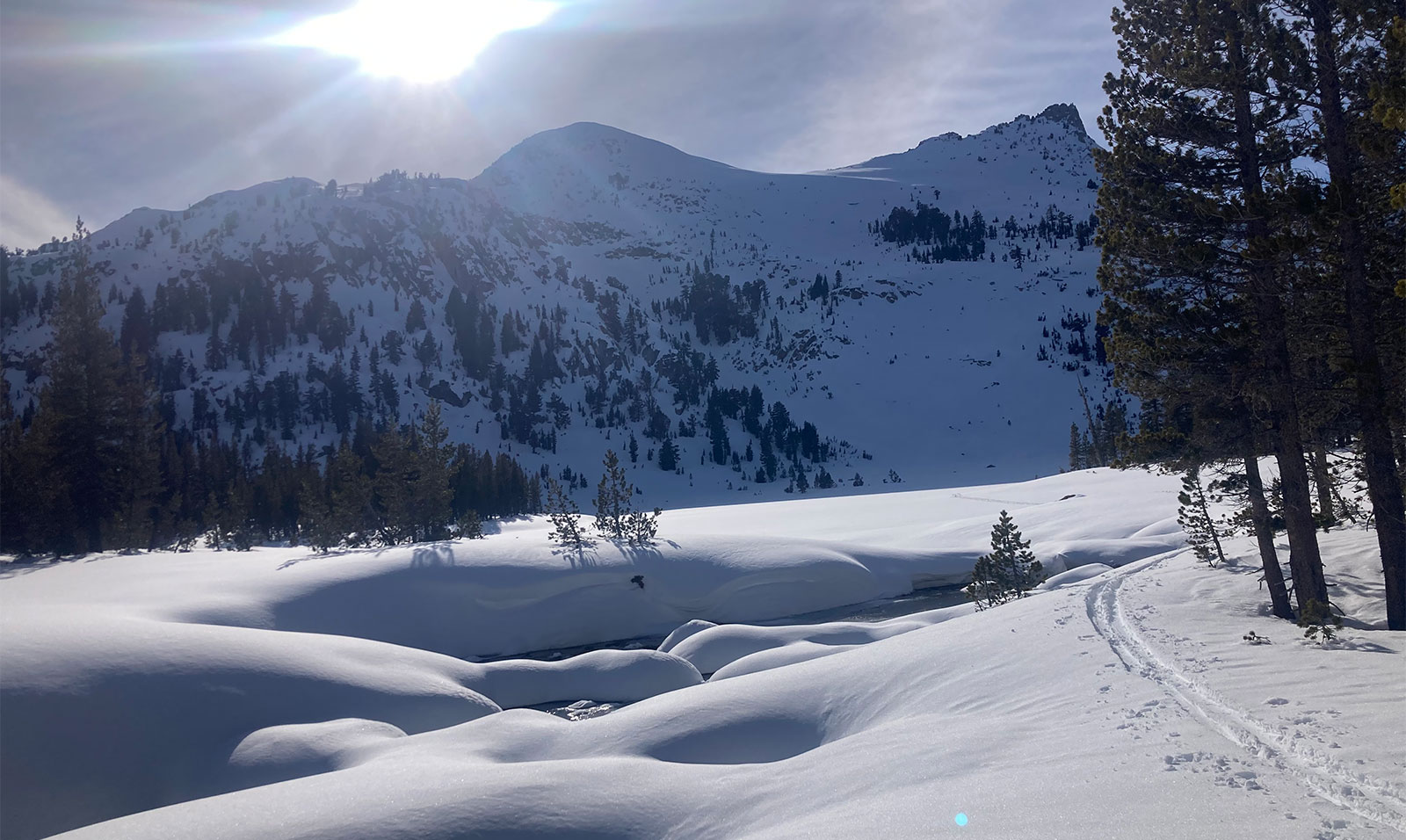
Avalanche and Snowpack Conditions
Please refer to the Eastern Sierra Avalanche Center (ESAC) and the Bridgeport Avalanche Center for the avalanche advisories for this part of the Sierra Nevada.
This is snow survey time in the Sierra Nevada, and we have had the opportunity go out and “poke holes in the snow” to the far reaches of our patrol area. This gives us a chance to see how deep the snow is at different elevations and in different drainages, and how much water is contained in that snow. Average snow depth is about six feet across this part of the Sierra Nevada, and snow densities average about 28%.
Our avalanche concerns have evolved with the deepening snowpack, and the warm spells between storms. We did observe remnants of wind slab, and wet loose snow avalanches while out and about this week. The persistent slab problem has lessened, and our attention has now turned to some weak layers in the upper part of the snowpack. We performed a Rutschblock test on a north aspect at 9,500 feet to see if we could cause it to fail on the depth hoar. However, the block failed (5/7 score) on a thin layer of facets overlying a melt freeze crust at 115 cm above the ground. We were unable to get the Rutschblock to react on the persistent weak layer at the base of the snowpack. There is a chance for significant snow this weekend and we will continue to track the reactivity of these weak layers in the upper snowpack.
History of Snow Surveys
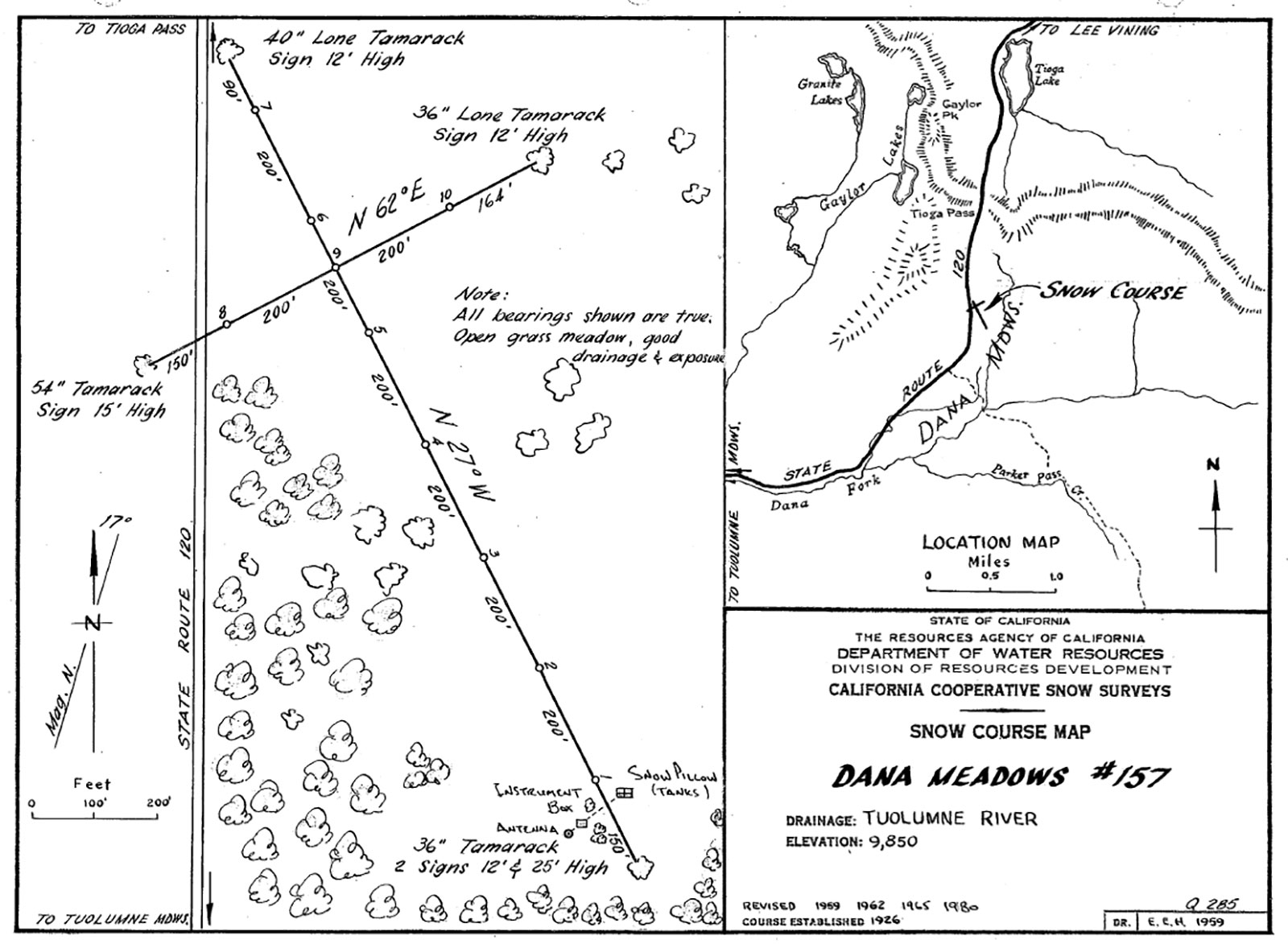
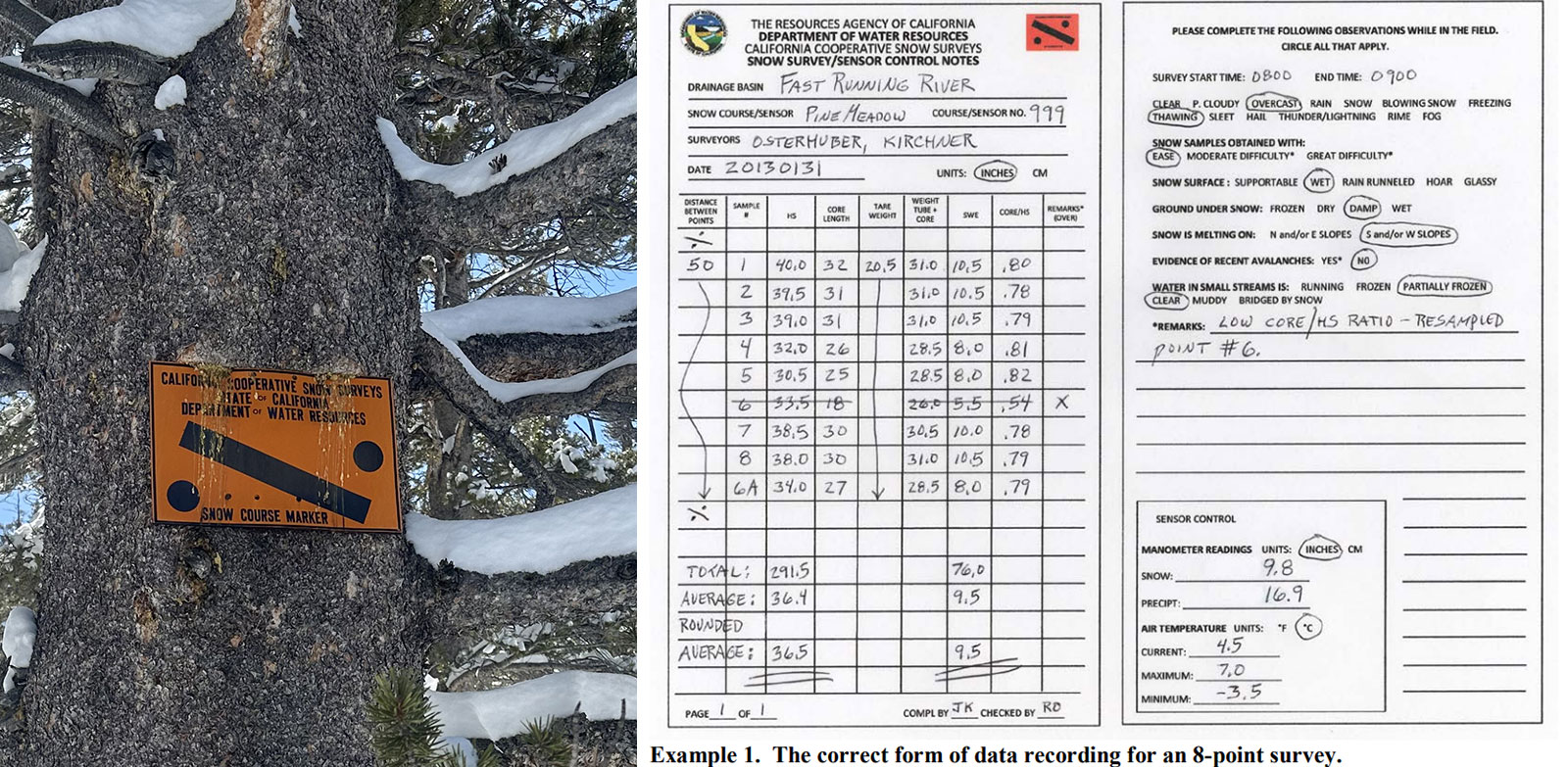
Wildlife
The temperatures have fluctuated quite a bit this season. During the most recent warm spell, water has flowed off the granite slabs forming small, slushy pools for the birds to bathe in, and the lake outlets and rivers have opened up a bit for other wildlife to enjoy easier access to this rare winter treat. But, while doing so the American robins, Clark’s nutcrackers, red crossbills, common raven, red-breasted nuthatches, Townsend’s solitaire and mountain chickadees have had to watch their back as the northern pygmy owl still has been lurking around.
The pine marten that we normally see bounding over top of the snow apparently sniffed out a treat, despite it being almost six feet below the surface. We found remnants of a bee’s nest that didn’t look that appetizing to us, but perhaps held something sweet enough to dig for. They might have to dig a bit deeper come next week…
Questions
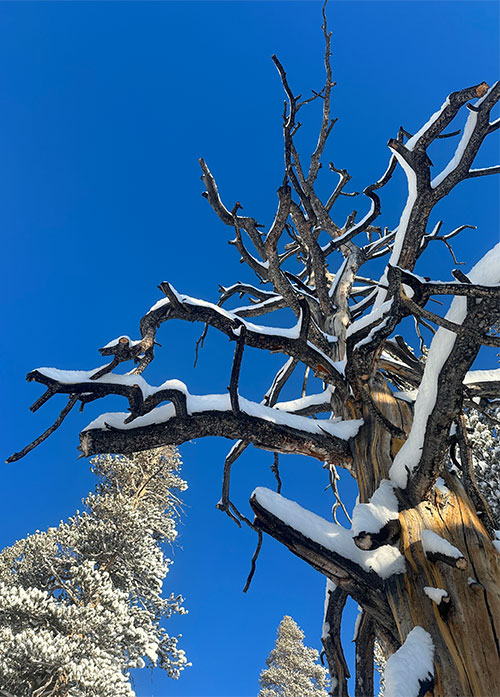
The Tuolumne Meadows Ski Hut is open. This primitive cabin is the campground reservation office in the summer and is located along the Tioga Road at the entrance to the campground. It is marked with a sign. There is firewood and 8 bunks that are available on a first-come, first-served basis. For those visiting the Tuolumne Meadows Ski Hut from the east (only) permits are self-issued at the Ski Hut. For those entering from other areas, please see Yosemite’s website: https://www.nps.gov/yose/planyourvisit/wildfaq.htm#winter or you may contact the wilderness office at 209/372-0740. As of this writing, there is electricity and limited phone service in Tuolumne Meadows.
Come prepared, and please make good decisions while traveling in the wilderness!
Read through the following three pages before embarking on any day or overnight snow travel within this park:
You may contact us with any additional winter Tuolumne Meadows related questions but response times may vary if we are away on patrol.
References
Rose, Gene. Snow Warriors: The Heroic Trail of the Early Snow Surveyors. Gene Rose, 2022.
Happy Leap Year; one bonus day of skiing this winter!
Laura and Rob Pilewski - Tuolumne Meadows winter rangers
